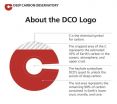INFORMATION:
Researchers from the following institutions contributed to the research: Fondazione Eni Enrico Mattei (FEEM), Potsdam Institute for Climate Impact Research (PIK), International Institute for Applied Systems Analysis (IIASA), Utrecht University, London School of Economics and Political Science (LSE), Northwest National Laboratory/Joint Global Change Research Institute (PNNL/JGCRI), Energy Research Centre of the Netherlands (ECN)
References:
Massimo Tavoni, Elmar Kriegler, Keywan Riahi, Detlef P. van Vuuren, Tino Aboumahboub,Alex Bowen, Katherine Calvin, Emanuele Campiglio, Tom Kober, Jessica Jewell, Gunnar Luderer,Giacomo Marangoni, David McCollum, Mariësse van Sluisveld, Anne Zimmer and Bob van der Zwaan
'Post-2020 climate agreements in the major economies assessed in the light of global models' DOI: 10.1038/NCLIMATE2475
Climate policy pledges are an important step forward but fall short of 2°C
Joint Press Release from the Fondazione Eni Enrico Mattei, the Potsdam Institute for Climate Impacts Research, the International Institute for Applied Systems Analysis, and the PBL Netherlands Environmental Assessment Agency
2014-12-15
(Press-News.org) Researchers have released one of the most comprehensive assessments of the timing and amount of greenhouse gas emissions that each of the world's major economies could produce under different scenarios, i.e. without new climate policies, for the currently discussed pledges, and under a scenario that limits future temperature rise to 2°C. "The pledges made so far lead to earlier emission peaking in many countries, with 1-1.5 °C less total warming than without these policies, but not sufficient to meet the 2oC target. Under the proposed commitments, cumulative CO2 emissions in China would be reduced by half. Yet, together with those of the other Asian economies they would exceed the total emission budget compatible with 2°C--about 1000 Gt CO2," says Massimo Tavoni (Fondazione Eni Enrico Mattei and Politecnico di Milano) who coordinated the project in press in the journal Nature Climate Change.
"Reducing emissions while limiting costs requires a significant contribution from developing countries. This could create unfair distribution of costs. Compensatory measures could address these" Tavoni adds. The study finds that financial support in the order of 100-150 billion USD /year by 2030 could achieve efficiency and cover the total investments in low carbon technologies needed in developing countries for the 2°C target. Fiscal revenues from instruments such as carbon taxes could also cover the clean energy investment gaps.
The study was conducted by a team of six European research institutions, using six different modeling tools. "The IPCC AR5 report has clearly highlighted the level of global effort needed to stabilize the climate," says Tavoni. "But a quantitative assessment of the regional implications of post 2020 climate policies, which brings together different modeling tools was missing. This is what the paper has achieved."
The study is directly linked to the ongoing climate negotiation process and highlights the challenges on the road from Lima to Paris.
"In our 2oC scenarios, global emissions peak around 2020. This is in clear contrast to our other scenarios projecting forward the pledges currently discussed by the major economies. They lead to a peaking of global emissions around or after 2040" says Elmar Kriegler, senior scientist at the Potsdam Institute for Climate Impact Research and co-leader of the study. "A large part of the emission reductions, if to be realized at lowest cost, would come from emerging economies such as China or India. The implication is clear. If a future climate agreement aims to tap into these abatement potentials, it would likely need to include mechanisms to compensate developing countries for part of their abatement effort."
Keywan Riahi, director of the Energy program at the International Institute for Applied Systems Analysis (IIASA) and a co-leader of the project, says, "This was the first study to examine regional climate mitigation potentials and needs in a real-life scenario, where the countries in the world start to transition from the currently fragmented climate policy regime towards global cooperative action. As a result, our study provides critical information for setting regional emission targets for the time period beyond 2020. We find that equitable solutions, which balance the costs across regions, would provide more "emission allowances" to the currently emerging economies. Yet even in these scenarios, countries like China will have to cut emissions to about half in 2050 to keep the 2oC target within reach."
Detlef van Vuuren, senior researcher at PBL Netherlands Environmental Assessment agency and co-leader of the project emphasizes the importance of the study for the international negotiations. "Our scenarios show the importance of a near-term peak in all global regions to avoid rapid and expensive emission reductions later. They also clearly show how different sectors can contribute to the overall emission reductions. Emission reductions need to come from changing energy supply, reducing energy demand - but also from changes in agricultural practices targeted at reducing non-CO2 emissions and deforestation."
ELSE PRESS RELEASES FROM THIS DATE:
Ancient wisdom boosts sustainability of biotech cotton
2014-12-15
Advocates of biotech crops and those who favor traditional farming practices such as crop diversity often seem worlds apart, but a new study shows that these two approaches can be compatible. An international team led by Chinese scientists and Bruce Tabashnik at the University of Arizona's College of Agriculture and Life Sciences discovered that the diverse patchwork of crops in northern China slowed adaptation to genetically engineered cotton by a wide-ranging insect pest. The results are published in the advance online edition of Nature Biotechnology.
Genetically engineered ...
Migrating 'supraglacial' lakes could trigger future Greenland ice loss
2014-12-15
Predictions of Greenland ice loss and its impact on rising sea levels may have been greatly underestimated, according to scientists at the University of Leeds.
The finding follows a new study, which is published today in Nature Climate Change, in which the future distribution of lakes that form on the ice sheet surface from melted snow and ice - called supraglacial lakes - have been simulated for the first time.
Previously, the impact of supraglacial lakes on Greenland ice loss had been assumed to be small, but the new research has shown that they will migrate farther ...
Stunning zinc fireworks when egg meets sperm
2014-12-15
Sparks literally fly when a sperm and an egg hit it off. The fertilized mammalian egg releases from its surface billions of zinc atoms in "zinc sparks," one wave after another, a Northwestern University-led interdisciplinary research team has found.
Using cutting-edge technology they developed, the researchers are the first to capture images of these molecular fireworks and pinpoint the origin of the zinc sparks: tiny zinc-rich packages just below the egg's surface.
Zinc fluctuations play a central role in regulating the biochemical processes that ensure a healthy ...
Molecular 'hats' allow in vivo activation of disguised signaling peptides
2014-12-15
When someone you know is wearing an unfamiliar hat, you might not recognize them. Georgia Institute of Technology researchers are using just such a disguise to sneak biomaterials containing peptide signaling molecules into living animals.
When the disguised peptides are needed to launch biological processes, the researchers shine ultraviolet light onto the molecules through the skin, causing the "hat" structures to come off. That allows cells and other molecules to recognize and interact with the peptides on the surface of the material.
This light-activated triggering ...
Joslin discovery may hold clues to treatments that slow aging
2014-12-15
BOSTON - December 15, 2014 - In a study published today by Nature, researchers at Joslin Diabetes Center used a microscopic worm (C. elegans) to identify a new path that could lead to drugs to slow aging and the chronic diseases that often accompany it--and might even lead to better cosmetics.
The Joslin team looked at how treatments known to boost longevity in the one-millimeter long C. elegans (including calorie restriction and treatment with the drug rapamycin) affected the expression of genes that produce collagen and other proteins that make up the extra-cellular ...
Scientists observe the Earth grow a new layer under an Icelandic volcano
2014-12-15
New research into an Icelandic eruption has shed light on how the Earth's crust forms, according to a paper published today in Nature.
When the Bárðarbunga volcano, which is buried beneath Iceland's Vatnajökull ice cap, reawakened in August 2014, scientists had a rare opportunity to monitor how the magma flowed through cracks in the rock away from the volcano. The molten rock forms vertical sheet-like features known as dykes, which force the surrounding rock apart.
Study co-author Professor Andy Hooper from the Centre for Observation and Modelling ...
The Deep Carbon Observatory: Quantities, movements, forms & origins of Earth's carbon
2014-12-15
The carbon in the atmosphere, ocean, surface life, and other shallow, near surface reservoirs accounts for only about 10% of Earth's carbon. Where is the other 90%? What is it doing? Does it matter?
The Deep Carbon Observatory (DCO), an ambitious 10-year (2009-2019) program of exploration and experimentation, pursues the mysterious 90% while building a new scientific field with a network of scientists from more than 40 countries. Recent results from DCO researchers are filling in the global carbon puzzle with findings that extend our understanding of the origins and limits ...
Occasional heroin use may worsen HIV infection
2014-12-15
Researchers at Yale and Boston University and their Russian collaborators have found that occasional heroin use by HIV-positive patients may be particularly harmful to the immune system and worsens HIV disease, compared to persistent or no heroin use.
The findings are published in the journal AIDS and Behavior.
"We expected that HIV-positive patients who abused heroin on an ongoing basis would have the greatest decreases in their CD4 count, but this preliminary study showed that those who abused heroin intermittently had lower CD4 cell counts, indicating a weakened ...
Home umpires favor their own teams in test matches
2014-12-15
The introduction of neutral umpires in Test cricket led to a drop in the number of LBW decisions going in favour of home teams, a study has revealed.
The findings from research by economists, published by the Journal of the Royal Statistical Society, come amidst renewed debate on whether neutral umpiring is still required in Test matches following the introduction of the Decision Review System (DRS).
Economists Dr Abhinav Sacheti and Professor David Paton from Nottingham University Business School and Dr Ian Gregory-Smith from the University of Sheffield analysed Leg ...
To know the enemy
2014-12-15
This news release is available in Japanese. New research published in the journal genesis, by Kenneth Baughman, Dr. Eiichi Shoguchi, Professor Noriyuki Satoh of the Marine Genomics Unit at the Okinawa Institute of Science and Technology Graduate University, and collaborators from Australia, reports an intact Hox cluster in the Crown of Thorns starfish, Acanthaster planci. This surprising result contrasts with the relatively disorganized Hox cluster found in sea urchins, which are also echinoderms, classification of animals including starfish, sea lilies, and sea cucumbers. ...
LAST 30 PRESS RELEASES:
Do our body clocks influence our risk of dementia?
Anthropologists offer new evidence of bipedalism in long-debated fossil discovery
Safer receipt paper from wood
Dosage-sensitive genes suggest no whole-genome duplications in ancestral angiosperm
First ancient human herpesvirus genomes document their deep history with humans
Why Some Bacteria Survive Antibiotics and How to Stop Them - New study reveals that bacteria can survive antibiotic treatment through two fundamentally different “shutdown modes”
UCLA study links scar healing to dangerous placenta condition
CHANGE-seq-BE finds off-target changes in the genome from base editors
The Journal of Nuclear Medicine Ahead-of-Print Tip Sheet: January 2, 2026
Delayed or absent first dose of measles, mumps, and rubella vaccination
Trends in US preterm birth rates by household income and race and ethnicity
Study identifies potential biomarker linked to progression and brain inflammation in multiple sclerosis
Many mothers in Norway do not show up for postnatal check-ups
Researchers want to find out why quick clay is so unstable
Superradiant spins show teamwork at the quantum scale
Cleveland Clinic Research links tumor bacteria to immunotherapy resistance in head and neck cancer
First Editorial of 2026: Resisting AI slop
Joint ground- and space-based observations reveal Saturn-mass rogue planet
Inheritable genetic variant offers protection against blood cancer risk and progression
Pigs settled Pacific islands alongside early human voyagers
A Coral reef’s daily pulse reshapes microbes in surrounding waters
EAST Tokamak experiments exceed plasma density limit, offering new approach to fusion ignition
Groundbreaking discovery reveals Africa’s oldest cremation pyre and complex ritual practices
First breathing ‘lung-on-chip’ developed using genetically identical cells
How people moved pigs across the Pacific
Interaction of climate change and human activity and its impact on plant diversity in Qinghai-Tibet plateau
From addressing uncertainty to national strategy: an interpretation of Professor Lim Siong Guan’s views
Clinical trials on AI language model use in digestive healthcare
Scientists improve robotic visual–inertial trajectory localization accuracy using cross-modal interaction and selection techniques
Correlation between cancer cachexia and immune-related adverse events in HCC
[Press-News.org] Climate policy pledges are an important step forward but fall short of 2°CJoint Press Release from the Fondazione Eni Enrico Mattei, the Potsdam Institute for Climate Impacts Research, the International Institute for Applied Systems Analysis, and the PBL Netherlands Environmental Assessment Agency





